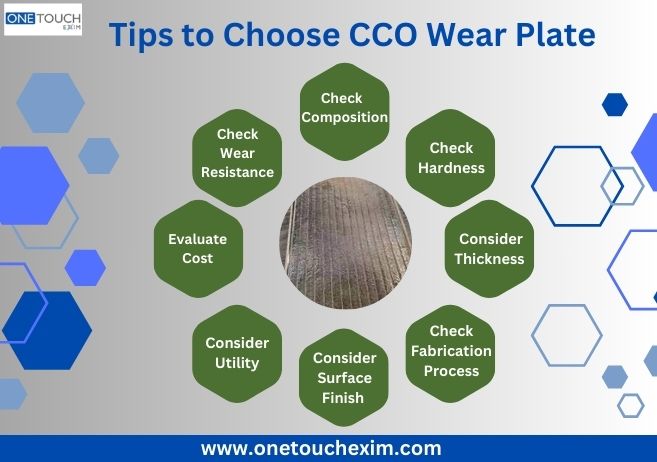A chromium carbide overlay wear plate is a high performance steel plate designed to handle extreme abrasion, impact and corrosion in industrial application. Non alloying hard surfacing process for rebuilding the mild steel base with a special hard chromium carbide layer which is deposited by welding. This has excellent hardness and is able to withstand the abrasion of materials such as core and ore for a long lifetime, but also without any compromise on structural integrity and impact resistance that can be delivered with steel base. Utilized across a large number of industries including mining, cement, steel, power generation and in applications such as hoopers, crushers. These plates extend the operational life of equipment with reducing maintenance requirements thus benefitting the business directly.
Understand the Material Composition
A chromium carbide overlay wear plate consists of a mild steel base and an overlay of hard surface that has high chromium carbide content (36% to 40%) on the top. To achieve hard carbides of around HRC 55-65 within a ductile austenitic matrix, the overlay contains roughly 25-30% chromium. Other elements such as magnesium, silicon and boron also contribute to crack resistance and bonding. Due to its dual layer design, the system offers application specific characteristics from impact absorptive properties of a steel base to extreme wear resistance through use of chromium carbides, making it particularly well suited for mining and heavy industrial applications.
Evaluate Hardness and Toughness Of CCO Wear Plates
Their medium level of hardness combined with a good main strength means that CCO wear plates are like white iron, resistant to sliding and showing little brittleness. Featuring a ductile steel matrix embedded with distinctive chromium carbide particles. The material combines outstanding wear resistance and antifracture properties. It is primarily due to the hard carbide that provides chromium hardness, which makes the material resistant to scratching by abrasive materials such as ore and slag. In the meantime the stronger steel substrate absorbs mechanical shocks so that cracks do not spread. The result is a durable material for harsh wear environments, such as mining and cement industries.
Determine the Optimal Thickness
The CRC Wear Plate and clad plate are ideal for extreme abrasion, such as high impact, heavy rock abrasion. The most cost effective protection from light to moderate wear, It is a 3 – 5 mm overlay on a 10-12 mm steel base. Highly abrasive environments 6-12 mm overlay + 20-55 mm base stand up well over time. Too much material might cause cracking or lack of weldability, too little will burn through prematurely. Wear simulations, field trials and industry standards are used as a baseline of what to design while also taking into account that the certain components like bearings can even be fulfilled by putting in less lubricant.
Application-Specific Requirements
Chromium carbide overlay Wear Plates can be made to suit any specific application in various industries. In mining, thick overlays severely wear from ore and slag sliding abrasion, while heavy bases resist high impact loads. Cement plants used for a medium thickness overlay for clinker and raw material handling, with erosion resistance being the priority. Application in power generation concentrates on corrosion resistance in FGD systems and a coating that adds more chromium can be applied over the base layer. Customization options include material hardness as well as overlay pattern and weldability to fit ideally with the customer’s operations and extend service life in application.
Conduct Material Testing and Certification
In Chromium carbide overlay wear plates the material testing and certification standards help you operate under assured performance and conduct. Primary Tests are hardness tests for verification of overlay hardness, metallographic analysis to assess the distribution and bonding integrity, followed by impact tests for checking toughness. KOOL will pass abrasion resistance testing according to ASTM G65 or DIN 50320 Quality checks including ISO 9001, ASTM A514 and EN1563 Non Destructive Testing. Detection of defects, MTRs with complete traceability for chemical composition and mechanical properties ensure that the plates are in front of application requirements in mining and heavy industries.
Consider Surface Finish and Coating
Surface Finish and Coating integrity are vital for enhancing the life of chromium carbide overlay wear plates. The ground or machined overlay surface provides a smooth finish for non-stick and no material buildup in applications such as chutes or hoppers. More aggressive applications may require coatings such as epoxy or ceramic-containing sealers to enhance resistance to corrosion. Crack free weld deposited overlay also must have uniform distribution of carbide to help prevent delamination. PWHT is necessary to temper the steel allowing the weld to be stress relieved, helping coating adhere and coating’s longevity. Service propagation is further improved by perfect surface preparation and finishing in highly abrasive industries such as mining.
Conclusion
Chromium Carbide Overlay Wear Plates provide a perfect combination of hardness, toughness and wear resistance involving in high abrasive application such as mining and iron manufacturing. The Wear face features a hard chromium carbide overlay, which is supported by the base of impact and erosion resistant steel. Thickness finishes and certifications can be mixed to provide a specific solution correlated to the need of operation. Even more, these coatings are continually tested for quality under extreme conditions and are to be treated as durable as possible during normal use. By processing the material, thickness and coatings of CCO plates they can help reduce downtime and maintenance costs for end users producing them a cost-effective solution for highly abrasive environments.
